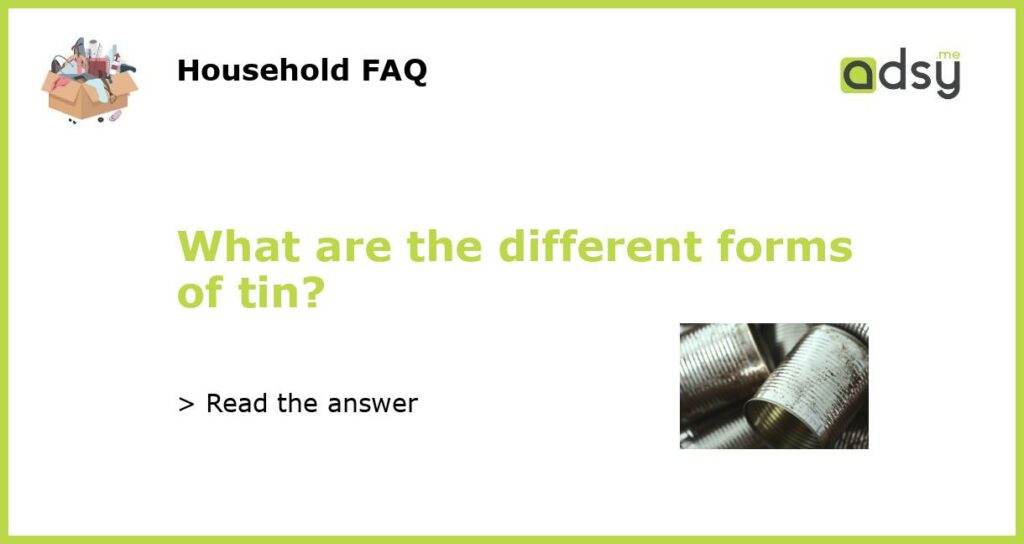The Different Forms of Tin
Tin is a versatile metal that comes in various forms. These forms have different characteristics and applications. In this article, we will explore the different forms of tin and their uses.
Tin Metal
Tin metal, also known as elemental tin, is the purest form of tin. It is a shiny silver-white metal that is malleable and ductile. Tin metal is used in numerous applications, including soldering, tinning, and electroplating. It is also commonly used in the production of tin cans for food preservation.
One important characteristic of tin metal is its low melting point, which makes it easy to work with. For example, soldering, which involves joining two metals together, is often done using tin metal. Tin metal is also resistant to corrosion, making it an ideal choice for protective coatings on other metals.
Tin Oxide
Tin oxide is a compound formed by the combination of tin and oxygen. It exists in two main forms: tin(II) oxide (SnO) and tin(IV) oxide (SnO2). Tin(II) oxide is a black powder, while tin(IV) oxide is a white powder.
Tin oxide is primarily used in the production of glass, as it acts as a flux, reducing the melting point of the glass and improving its clarity. It is also used as a polishing agent for metals, ceramics, and glass. In addition, tin oxide is a key ingredient in the production of ceramics and enamels, providing a durable and glossy finish.
Tin Sulfide
Tin sulfide, also known as stannous sulfide or tin monosulfide, is a compound composed of tin and sulfur. It occurs naturally as the mineral cassiterite. Tin sulfide is primarily used as a pigment in the production of black ink, paints, and dyes.
Aside from its use as a pigment, tin sulfide also has applications in the field of electronics. It is used as a semiconductor material in certain electronic devices, such as solar cells and thin-film transistors. Research is also being conducted on its potential use in energy storage devices, such as lithium-ion batteries.
Tin Chloride
Tin chloride, also known as stannous chloride, is a compound formed by the combination of tin and chlorine. It exists in two main forms: anhydrous tin chloride (SnCl2) and tin(II) chloride dihydrate (SnCl2·2H2O).
Tin chloride is primarily used as a reducing agent in various industrial processes, such as dyeing and printing textiles, and reducing metal oxides to their respective metals. It is also used in the production of tin-plated steel, which is widely used in the food packaging industry.
Tin-Lead Alloys
Tin-lead alloys, also known as solder, are a combination of tin and lead. The most common tin-lead alloy is known as 60/40 solder, which contains 60% tin and 40% lead. These alloys are used in soldering applications, such as joining electrical components and circuit boards in electronics manufacturing.
Tin-lead alloys have a low melting point and good wetting properties, allowing them to form strong and reliable solder joints. However, due to environmental and health concerns regarding lead, the use of tin-lead alloys in certain applications has been gradually phased out in favor of lead-free alternatives.
In conclusion, tin exists in various forms, each with its own unique characteristics and applications. From tin metal used in soldering and electroplating to tin oxide used in glass production, these different forms of tin play essential roles in numerous industries.






